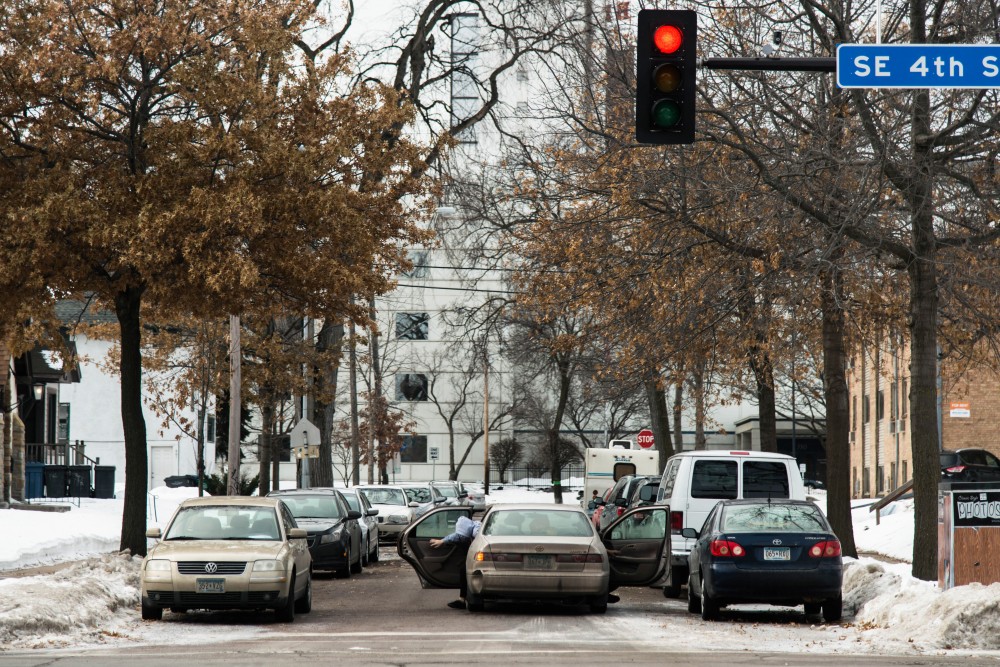Marcy-Holmes residents are searching for solutions to combat a surge in neighborhood parking violations.
The Marcy-Holmes Neighborhood Association is taking a varied approach to the problem — informing residents about street parking alternatives, encouraging them to report parking violations and planning a survey to outline solutions.
“[Our goal] is making sure that the residents who work and bike and live here are safe,” said Chris Lautenschlager, executive director of MHNA.
MHNA’s Board of Directors discussed and informally approved $14,000 to $16,000 in funding for a multi-tiered parking project during their Jan. 16 meeting.
Lautenschlager said many parking issues in the neighborhood stem from people parking their cars in front of fire hydrants and disability ramps, as well as in bike lanes and driveways.
Minneapolis traffic enforcement released a report in mid-2017 showing a 100 percent spike in calls related to Marcy-Holmes parking violations, said Patricia Nauman, Marcy-Holmes resident and executive director of the Metro Cities lobbying group.
The neighborhood was also among several that experienced “extremely high” numbers of illegal parking incidents, Nauman said.
“Livability and safety are really driving the concerns,” she said. “When the neighborhood is 100 percent parked … it limits visibility and mobility for everybody who lives and works here.”
The three-tiered project includes:
· Informing residents in higher-density parking areas about ways to reduce their street parking usage
· Establishing an informal “parking watch” to streamline and improve the reporting process for parking violations
· Conducting a parking study in west Marcy-Holmes to better understand solutions for the problem and compile data.
The information from a potential parking study would help residents contest developers’ requests for fewer off-street parking slots, Lautenschlager said.
The Minneapolis City Planning Commission recently approved a reduced off-street parking requirement for developer Go Gopher Rentals’ micro-unit apartment building in west Marcy-Holmes — despite concerns from residents and MHNA.
“It’s too easy for the city planners to suggest that there is ample parking in the area, or that people will be using high-frequency transit,” Lautenschlager said. “We want to be armed with information so it’s not just looking like [we’re arguing with] emotional, anecdotal evidence.”
MHNA President Bob Stableski said expensive parking rates in the area have also driven residents to seek street parking.
“If it’s cheaper to park on the street, they’re going to park on the street,” Stableski said. “All of the new [apartment] buildings that I know of have space, but the problem is that they charge for parking.”
Stableski and the MHNA board will review various proposals in early February from analysis companies vying to collect the data. MHNA hopes to have the study conducted during the University of Minnesota’s spring semester to account for student residents.
“We understand [the problems] perfectly — it’s development and infrastructure, but we’re not sure what to do about it,” Stableski said. “There’s not one solution … [a study is] just the beginning of understanding the dynamic and where issues are coming from.”







